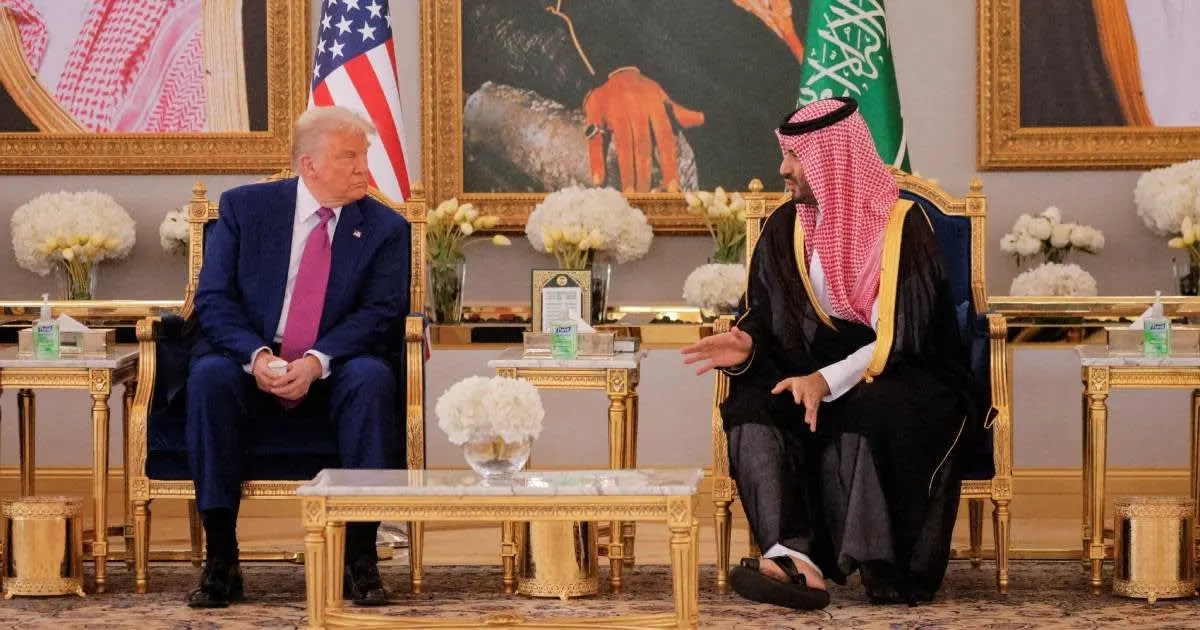The recent visit of a prominent political figure to Saudi Arabia has sparked considerable discussion on the global stage, marked by a significant arms deal and a surprising announcement regarding sanctions on Syria. This trip underscores the complex interplay of economic interests, geopolitical strategies, and humanitarian considerations in the Middle East.
During the visit to Riyadh, a substantial arms agreement valued at $142 billion was finalized between the United States and Saudi Arabia. This agreement solidifies the long-standing defense partnership between the two nations, ensuring the flow of advanced military hardware to the Kingdom.
Proponents of such deals often highlight the economic benefits for the exporting country, including job creation and bolstering the defense industry. They also argue that these agreements contribute to regional stability by equipping allies to counter shared threats.
However, large-scale arms transfers in a region beset by conflicts and political tensions invariably draw criticism. Concerns are frequently raised about the potential for these weapons to exacerbate existing conflicts, fuel proxy wars, and contribute to human rights abuses.
Critics argue that prioritizing arms sales over diplomatic solutions can undermine efforts to achieve lasting peace and stability. The timing of this particular deal, amidst ongoing regional conflicts and humanitarian crises, has amplified these concerns among international observers and human rights organizations.
Adding another layer of complexity to the visit was the unexpected announcement that the United States would be lifting sanctions on Syria. These sanctions had been in place for over a decade, initially imposed to pressure the government of Bashar al-Assad in response to its handling of the civil war and alleged human rights violations. The decision to lift these longstanding economic restrictions signals a significant shift in U.S. foreign policy toward Syria.
The rationale provided for this policy reversal centered on the recent change in Syria’s leadership, with the ousting of Bashar al-Assad and the establishment of a new transitional government under President Ahmed al-Sharaa in December.
The U.S. administration expressed hope that this new leadership would create an opportunity for a fresh start, allowing the country to rebuild and move toward a more stable future. This policy shift aligns with statements emphasizing the need to give Syria “a chance at greatness” and allow it “to shine.”
This decision has elicited a range of reactions. Syrian Foreign Minister Asaad al-Shaiban

I hailed the lifting of sanctions as a “pivotal turning point,” expressing optimism for the country’s future stability and reconstruction.
Robert Ford, a former U.S. ambassador to Syria, also lauded the move, emphasizing the urgent need for international capital to flow into Syria to facilitate its recovery from years of devastating conflict. He noted the widespread devastation and the critical need for reconstruction and foreign financing.
Conversely, the move has also generated considerable unease and criticism. Some analysts question the timing and motivations behind lifting sanctions, particularly in light of ongoing instability and reports of clashes within Syria.
Concerns have been raised about whether sufficient progress has been made on issues such as minority rights and political stability to warrant such a significant policy change. This decision reportedly followed a request from Saudi Arabia’s Crown Prince Mohammed Bin Salman, which has also led to speculation about the underlying geopolitical calculations.
Critics argue that lifting sanctions prematurely could be seen as overlooking past human rights abuses and potentially emboldening the new leadership without concrete guarantees of political reform and accountability.
They emphasize the importance of ensuring that any easing of restrictions is tied to tangible improvements in the human rights situation and a genuine commitment to inclusive governance.
The broader context of the visit also included discussions about regional alliances and the potential for further normalization of relations between Arab states and Israel. While the arms deal reinforced traditional security partnerships, the focus on economic development and regional stability suggests a desire to foster a more interconnected and prosperous Middle East.
Congress Approves $460bn Spending Deal, Prevents Government Shutdown.
The stated aspiration for Saudi Arabia to join the Abraham Accords, which normalized relations between Israel and several Arab nations, indicates a continued push towards diplomatic engagement and cooperation in the region.
In conclusion, the visit to Saudi Arabia was a multifaceted event with significant implications for regional and international politics. The $142 billion arms deal underscores the enduring security relationship between the U.S. and Saudi Arabia, while the decision to lift sanctions on Syria represents a notable shift in U.S. foreign policy, driven by the change in Syrian leadership and a desire to facilitate the country’s reconstruction.
These developments highlight the intricate web of alliances, economic interests, and humanitarian concerns that shape the Middle East, and the delicate balancing act required in navigating its complex political landscape. The long-term consequences of these decisions will undoubtedly be closely watched by the international community.



